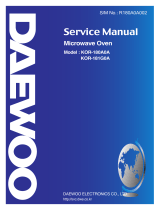Merrychef CD2 is an advanced kitchen appliance that lets you cook with confidence.
With Merrychef CD2 you can cook delicious burgers, pizza, chicken wings, and fish in just minutes. It is a countertop model with a 34.3 liter (1.21 ft³) capacity. It has 3000W of power for cooking various types of food. You can choose between 100%, 75%, 50%, 25% microwave settings, and convection only. The temperature can be set between 175° and 275°. The built-in timer can be set up to 30 minutes. The oven uses a turntable for even cooking. Its dimensions are 530 x 550 x 575 mm.
Merrychef CD2 is an advanced kitchen appliance that lets you cook with confidence.
With Merrychef CD2 you can cook delicious burgers, pizza, chicken wings, and fish in just minutes. It is a countertop model with a 34.3 liter (1.21 ft³) capacity. It has 3000W of power for cooking various types of food. You can choose between 100%, 75%, 50%, 25% microwave settings, and convection only. The temperature can be set between 175° and 275°. The built-in timer can be set up to 30 minutes. The oven uses a turntable for even cooking. Its dimensions are 530 x 550 x 575 mm.




















-
 1
1
-
 2
2
-
 3
3
-
 4
4
-
 5
5
-
 6
6
-
 7
7
-
 8
8
-
 9
9
-
 10
10
-
 11
11
-
 12
12
-
 13
13
-
 14
14
-
 15
15
-
 16
16
-
 17
17
-
 18
18
-
 19
19
-
 20
20
-
 21
21
-
 22
22
-
 23
23
-
 24
24
-
 25
25
-
 26
26
-
 27
27
-
 28
28
-
 29
29
-
 30
30
-
 31
31
-
 32
32
Merrychef CD2 User manual
- Category
- Cookers
- Type
- User manual
Merrychef CD2 is an advanced kitchen appliance that lets you cook with confidence.
With Merrychef CD2 you can cook delicious burgers, pizza, chicken wings, and fish in just minutes. It is a countertop model with a 34.3 liter (1.21 ft³) capacity. It has 3000W of power for cooking various types of food. You can choose between 100%, 75%, 50%, 25% microwave settings, and convection only. The temperature can be set between 175° and 275°. The built-in timer can be set up to 30 minutes. The oven uses a turntable for even cooking. Its dimensions are 530 x 550 x 575 mm.
Ask a question and I''ll find the answer in the document
Finding information in a document is now easier with AI
Related papers
-
Merrychef EC400 User manual
-
Merrychef EC501 User manual
-
Merrychef HD1025 User manual
-
Merrychef 402s Operating instructions
-
Merrychef 402s Operating instructions
-
Merrychef E3 User manual
-
Merrychef MD1000C25EX User manual
-
Merrychef 402s User manual
-
Merrychef e4 -US User manual
-
Merrychef E5 User manual
Other documents
-
GE Appliances JVM3160DFWW User guide
-
Avanti WCR5104DZD User manual
-
STARBUCKS E2S User manual
-
 Ultra Products Dual UV 80mm Round Cold Cathode Light Kit ULT31354 User manual
Ultra Products Dual UV 80mm Round Cold Cathode Light Kit ULT31354 User manual
-
Maytag WM277B User manual
-
Daewoo KOR9PDK Owner's manual
-
Duke DSO 500 User manual
-
Sanyo SM-GA0005 User manual
-
Magic Chef MCD1311ST Owner's manual
-
 DAEWOO ELECTRONICS 181GOA0A User manual
DAEWOO ELECTRONICS 181GOA0A User manual

































